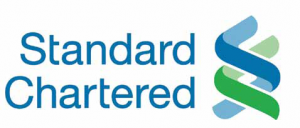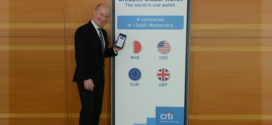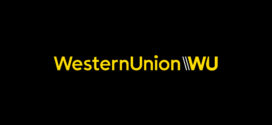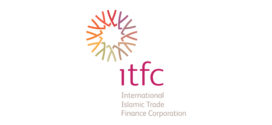Full Year 2013 income and profits lower in challenging market conditions
Significant actions announced in 2013 to deliver future growth and capital accretion
- Operating income[1] was down 1 per cent to US$18,671 million (2012: US$18,783 million) in line with pre-close
- 25 markets delivered more than US$100 million in income; 17 over US$100 million in profits
- Profit before OCA, goodwill impairment and settlements with the US authorities down 7 per cent at US$6,958[2] million, from US$7,518 million in 2012[3]
- Clients continue to be active; client income up 4 per cent, advances up 4 per cent, deposits up 2 per cent
- Basel 2 Core Tier 1 ratio up 40 basis points in second half of 2013 to 11.8 per cent (2012: 11.7 per cent)
- Dividend per share increased 2 per cent to 86 cents per share
- Normalised return on ordinary shareholders’ equity of 11.2 per cent (2012: 12.8 per cent)
London, 5 March 2014 – 2013 was a challenging year both for us and for the industry. We were impacted by margin and spread compression, volatile Financial Markets and continuing difficulties in Korea. This resulted in a 1 per cent fall in income to US$18,671 million and a decline in profit before tax of 7 per cent to US$6,958 million.
We continued to see the benefit of our strong relationships with our clients, with excellent business volume growth throughout the year. Volume growth in trade, cash and FX options were up 21 per cent, 11 per cent and 37 percent respectively. We continue to grow our balance sheet and the longer-term attractions of Asia, Africa and the Middle East remain compelling.
On a Basel 2 basis, our Core Tier 1 ratio is 11.8 per cent. We are also strongly capitalised on a Basel 3 basis, with a CET 1 ratio of 10.9 per cent. These capital levels position us well to manage future regulatory capital demands as they evolve.
While we expect risk weighted assets to grow in 2014, we intend to maintain healthy capital ratios through a range of measures including driving profitable, capital accretive growth and divesting certain non-core assets.
Commenting on these results, Group Chief Executive of Standard Chartered Peter Sands, said:
“2013 was a tough year. We have reacted to the near term challenges by sharpening our focus and our strategy as we look to mitigate the impact and adapt to the changing environment.
“Market and trading conditions are more volatile and difficult than a year ago. Whilst current performance momentum is ahead of the second half of last year, performance in this first half will remain challenging at both an income and profit level.
“However, our balance sheet is strong, given the strength of our capital and liquidity. We are superbly positioned with a unique network across markets offering huge growth opportunities and we have immensely strong relationships with our clients. We are very clear on what we have to do.
“We continue to pay for performance, and given 2013 was challenging, we have reduced the bonus pool. Our senior employees will shoulder a greater share of the impact, and we will pay in bonuses around half what we return to shareholders in dividends.”
Challenging year
Profit before tax was down US$560 million to US$6.9 billion or 7 per cent. This was driven by continuing challenges in Korea where operating profit was down nearly US$530 million. We also saw material margin compression in Transaction Banking, following a significant influx of liquidity into our markets, causing a drag to income of nearly US$400 million.
Concerns in the second half of the year surrounding the effect of QE tapering, as well as increased regulation, impacted Financial Markets. Income fell by US$564 million half on half, and income in the fourth quarter was 19 per cent lower than the third quarter.
Finally, significantly slower realisations and revaluations in Principal Finance resulted in a US$206 million fall in revenue.
As a result, Group income of US$18.7 billion was 1 per cent down on 2012 but with 25 markets each contributing income of over US$100 million and 17 markets delivering more than US$100 million in profit; Hong Kong, our largest market, grew income 11 per cent and operating profit 16 per cent.
We have been extremely disciplined in managing costs, with expenses for the year at US$10.2 billion, only 1 per cent higher than in 2012.
Total impairment increased 25 per cent. Within this, loan impairment increased 35 per cent driven mainly by continuing impairment in the unsecured Consumer Banking portfolio. At the half year, we took a goodwill impairment charge related to Korea, a reflection of the severity of the challenges facing us and the industry there.
Our balance sheet remains in excellent shape, with an asset to deposit ratio and liquid asset ratio of nearly 76 per cent and nearly 30 per cent respectively.
Wholesale Banking
Wholesale Banking income was down 2 per cent; against this income performance, expenses were very tightly controlled, increasing only 1 per cent with lower staff costs offsetting increased regulatory expenses.
Client income, 86 per cent of total income, was up 4 per cent and Corporate Finance continued to perform strongly with income up 13 per cent on 2012. Financial Markets income was flat year on year at US$3.7 billion, as strong volume growth was offset by spread compression.
We were the No. 2 global underwriter of offshore yuan bonds in 2013 and partnered with the Agricultural Bank of China to provide RMB clearing services in London. The internationalisation of the RMB remains a significant opportunity for the bank; by 2020 China’s RMB denominated trade is estimated to more than quadruple to over US$3 trillion.
Total impairment rose 5 per cent year on year. Within this, loan impairment was up 12 per cent, whilst other impairment was down 19 per cent. As a result, profit before tax was down 4 per cent to US$5,643 million.
Consumer Banking
Consumer Banking income grew 2 per cent. Expenses were well controlled, increasing by only 1 per cent. Loan impairment increased 53 per cent and we have continued to take steps to de-risk our unsecured book. As a result Consumer Banking operating profit fell 11 per cent to US$1,550 million.
Given the slower growth in unsecured assets going forward, we would expect loan impairment to moderate in the second half of this year.
Korea continued to have a material impact on Consumer Banking performance but if excluded, income was up 5 per cent with profits up 8 per cent, driven by Hong Kong, MESA, India and the Africa region.
Taking actions
Over the year as we saw the challenges mount and our momentum slow, we took actions to mitigate the impact and to adapt to the changing environment. Following our annual strategic review, we announced in last November some steps to re-position the Group for growth. Priorities include:
- Establishing five strategic aspirations; Wealth, Trade, Relationships, Investment and Relevant scale in our key markets;
- Applying five tests to be applied to peripheral businesses;
- Reorganising our regions, business and functions, to ensure alignment to our strategy and streamline how we work;
- “Flexing” our financial framework, including both positive jaws and capital accretion.
Since then, we have already released US$3 billion of RWAs from low-returning client relationships in Wholesale Banking, which we will redeploy into higher returning relationships.
We have been systematically subjecting those businesses that are underperforming, or less aligned to our core strategy, to five tests, asking tough questions about their strategic relevance, alignment with Here for good, and sustainable economics. As a result we are exiting or reconfiguring a number of smaller businesses: Consumer Banking in Lebanon, Private Banking in Geneva, our consumer finance business in Hong Kong and Shenzhen and our consumer finance and savings bank businesses in Korea.
We are taking specific actions to improve the performance of our business in Korea. In 2013 we reduced RWA in Korea by 7 per cent and in 2014 will reduce it further. We are simplifying the structure and reducing the number of legal entities from nine to three. We are reducing costs, with staff numbers down by nearly 400 year on year; and consolidating the branch network, down from 408 in 2011 to 343 during 2013. As a result, our Korean business will be smaller and more profitable.
In Wholesale Banking, we are redeploying capital from locally oriented clients towards clients that can benefit from our network and are selectively de-risking the unsecured book in Consumer Banking, putting greater emphasis on Wealth Management. However, Korea will continue to be very challenging through 2014.
Outlook
Our outlook for 2014 is one of modest growth but we are well positioned in attractive markets. We are confident that the actions we are taking will enable us to deliver sustained and profitable growth.
[1] Excluding Own Credit Adjustment (OCA). OCA is the adjustment taken for the firm’s own credit risk on the liabilities reported at Fair Value, under the Fair Value Measurement rules (FVM) Fair Value measurement is an accounting standard under IFRS 13, whereby firms may choose to carry trades at Fair Value instead of amortised cost.
[2] We exclude OCA, goodwill impairment in respect of Korea and settlements with the US authorities from all numeric commentary.
[3] Amounts for 2012 have been restated.
 Cash And Trade Magazine For Cash and Trade professionals in the Middle East
Cash And Trade Magazine For Cash and Trade professionals in the Middle East





